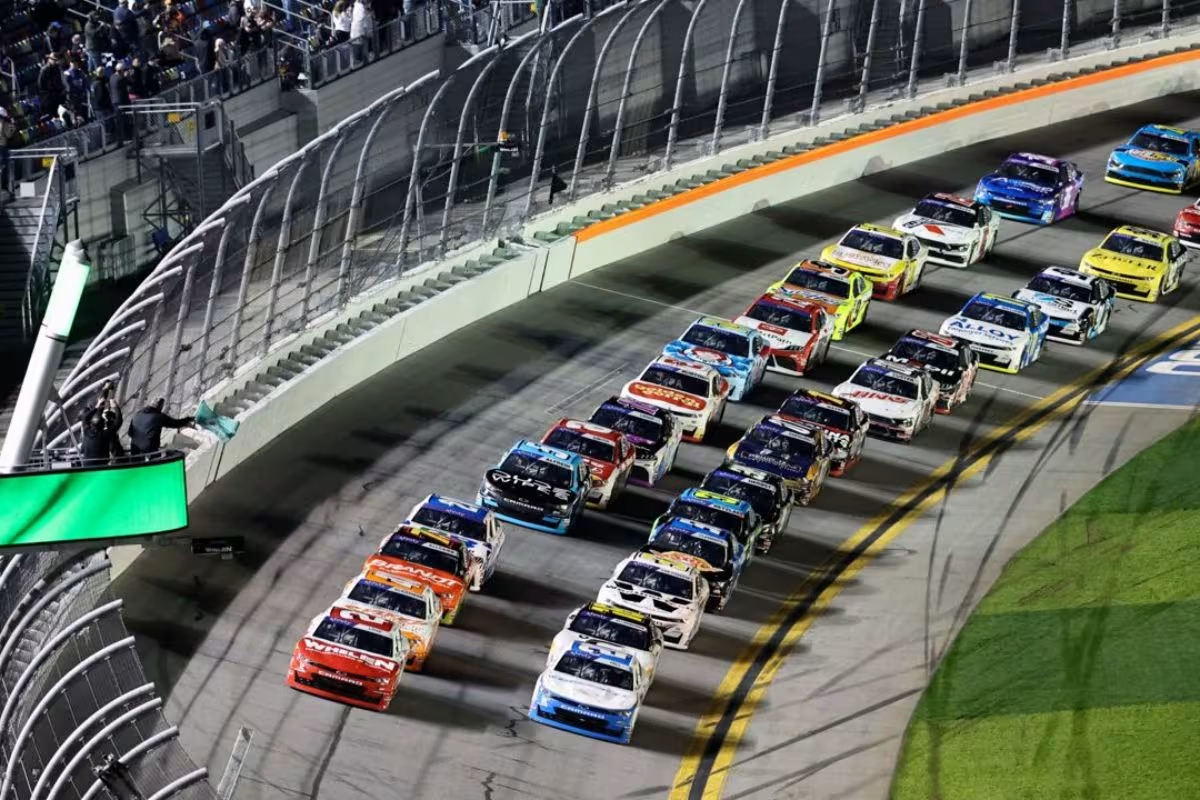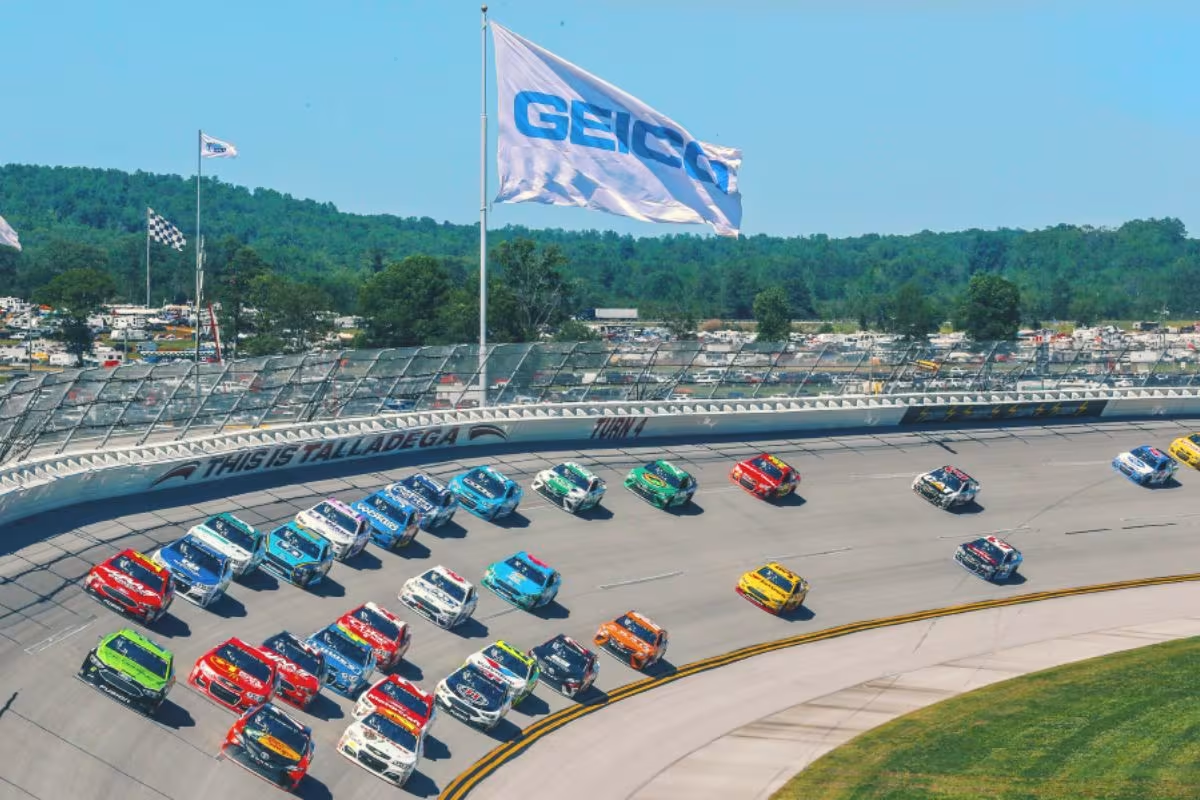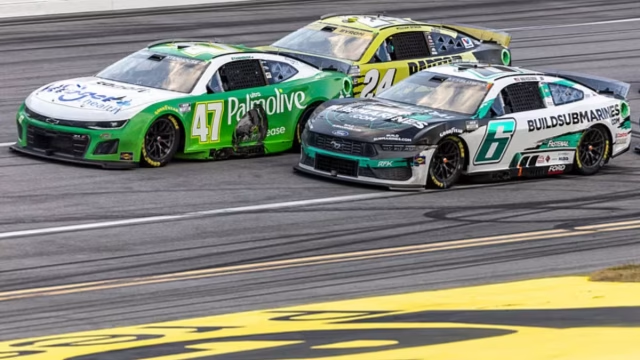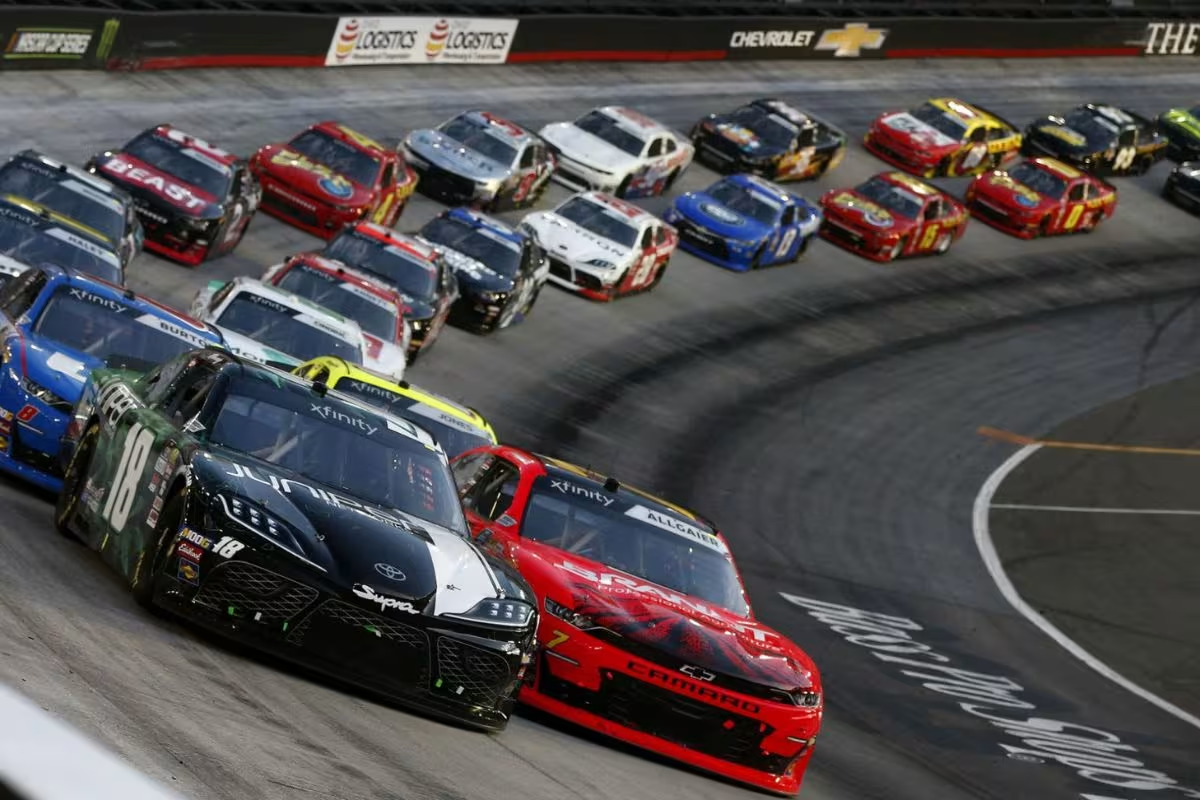Chase Elliott’s Talladega Comeback Controversy: Insiders in NASCAR have voiced concerns about the Damage Vehicle Policy (DVP) after Chase Elliott‘s recent return to racing. They point out significant inconsistencies in how the policy is enforced. Elliott was allowed to race even with damage, while other drivers faced penalties for much smaller issues. This inconsistency has led to calls for greater transparency and uniformity in how rules are applied.
Key Highlights
- The DVP rule’s inconsistent enforcement has raised significant concerns, particularly highlighted during Chase Elliott’s recent comeback performance.
- NASCAR’s subjective decision-making regarding vehicle eligibility has led to perceptions of favoritism among teams and fans.
- Analysts have criticized NASCAR’s lack of transparency in communicating the DVP rule, causing confusion and frustration within the racing community.
- The backlash over inconsistent DVP applications reflects a broader demand for accountability and uniform standards in NASCAR’s rule enforcement.
Recent Incidents and Controversy
Recent events in NASCAR have sparked major controversy over the Damaged Vehicle Policy (DVP), highlighting inconsistencies in how it’s enforced and leaving fans and teams questioning its fairness.
The controversy kicked off at The Glen when Ryan Blaney had to retire after a crash involving five cars on the first lap. Despite the serious damage, other cars continued to race, raising concerns about how decisions are made regarding which vehicles can be repaired and which must retire.
Things got even more complicated at Kansas when Josh Berry faced a flat tire. He stayed in his car while the safety team tried to tow him, but unlike Blaney, he was sidelined. This inconsistent handling of situations has frustrated fans and teams alike.
The issues came to a head during the Talladega race, where the massive wreck known as the “Big One” involved 28 cars. Some cars were able to make it to the pits for repairs, while others were towed and allowed to keep racing.
These differences in how the DVP is enforced have led to passionate discussions among fans, many of whom are calling for more transparency and accountability from NASCAR officials.

Community Reactions
The uproar surrounding NASCAR’s DVP rule has sparked considerable community reactions, highlighting a growing frustration among fans, teams, and analysts alike. The inconsistency in the application of the DVP rule—particularly in view of recent incidents—has led to a chorus of dissent. Many fans have criticized NASCAR for its failure to enforce uniform standards, especially when contrasting situations like those of Josh Berry and the events at Talladega.
The dialogue has been extensive, with prominent figures in the sport expressing their concerns. Analysts and commentators, such as Jeff Gluck and Jordan Bianchi, have raised pivotal questions surrounding the DVP rule’s interpretation and enforcement.
“So, how did the 9 and the 14, who had damage and were involved in this accident, get towed back to pit road and then were able to continue? Please explain.” – Bianchi
[Sawyer] said that it was never intended to take good race cars out of the race.” – Gluck
Jeff and Jordan discuss the discrepancies involving the current DVP policy. 🗣️ pic.twitter.com/XNyzk007C6
— Dirty Mo Media (@DirtyMoMedia) October 7, 2024
As the community continues to voice its concerns, the future of the DVP rule remains a contentious topic. The collective sentiment suggests a pivotal moment for NASCAR to reassess its policies, ensuring fairness and clarity for all competitors.
Discussion on the Rule
NASCAR’s DVP rule has ignited a critical examination of its application and implications within the racing community. The recent incident involving Chase Elliott and Chase Briscoe raised pertinent questions about the enforcement of this rule, particularly concerning the towing of damaged vehicles back to pit road. NASCAR’s intention behind the DVP rule is to maintain competitive integrity by guaranteeing that only those vehicles capable of racing effectively remain in contention.
However, the cases of Elliott and Briscoe, who were involved in the same wreck yet allowed to continue, have sparked debate about whether the rule is applied uniformly. Insider discussions reveal that NASCAR officials, including Elton Sawyer, emphasized the aim of preserving as many drivers in the race as possible.
The rationale, as articulated by NASCAR commentator Adam Gluck, suggests a shift towards a more flexible interpretation of the DVP rule. This raises critical questions about the potential for subjective decision-making in such scenarios. If NASCAR is indeed adjusting its policy to favor the inclusion of competitive cars, it poses a dilemma: does this compromise the core of fair competition?
“Basically, they’re trying to use common sense, I guess, and change the policy a little bit.” – Gluck
The implications of these nuanced interpretations extend beyond one race; they challenge the foundational principles that govern NASCAR. As stakeholders in the racing community seek clarity, the ongoing discourse around the DVP rule highlights the necessity for consistency and transparency in its implementation.
Only through a thorough reevaluation can NASCAR guarantee that its rules promote both fairness and excitement in the sport.
Inconsistencies and Responses
Amid mounting examination, inconsistencies in the enforcement of the DVP rule have prompted considerable concern among teams and drivers. As the 2024 playoffs unfold, questions arise regarding NASCAR’s commitment to a fair and transparent application of its regulations. The recent exchange between Brad Moran and NASCAR officials demonstrates the confusion surrounding the rule, as Moran expressed his disbelief over the apparent reversal of previously stated policies.
“But they said they weren’t going to change the policy; they weren’t until the end of the year. So, I’m confused.” Unable to answer Bianchi’s doubt, Gluck simply ended the conversation by saying, “Well, that’s… Yes, that’s a problem.” – Bianchi
“Well, that’s… Yes, that’s a problem.” – Gluck
This has led to three key concerns:
- Lack of Clarity: NASCAR’s failure to maintain consistent communication regarding the DVP rule has left teams in a state of uncertainty. The governing body’s prior commitment to not changing the rules until the end of the year now appears inconsistent.
- Perception of Favoritism: When governing bodies alter regulations without clear justification, it cultivates a narrative of partiality. This situation is exacerbated when officials face examination from an ongoing anti-trust lawsuit, raising further questions about their integrity.
- Impact on Competitive Balance: Inconsistent rule enforcement undermines the competitive nature of NASCAR. Teams rely on predictability to strategize effectively, and any deviation can considerably impact race outcomes.
Gluck’s acknowledgment of the problem highlights the urgency for NASCAR to address these inconsistencies.
Explanation of Decisions
Recent decisions made by NASCAR regarding the handling of the DVP rule have sparked considerable debate among teams, drivers, and fans. The recent retirement of Josh Berry’s No. 4 car at Kansas has been particularly contentious, placing a spotlight on NASCAR’s interpretation and application of this rule.
Following Berry’s early race incident, which resulted in multiple flat tires and minor damage, NASCAR’s choice to park the vehicle raised eyebrows, particularly given the lack of severe impairment to the car’s competitive integrity.
Brad Moran, NASCAR’s managing director, provided a defense for the decision, emphasizing that a car with flat tires and no notable damage should ideally be towed back for repairs. However, his comments inadvertently highlighted a perceived inconsistency in NASCAR’s enforcement of the DVP rule.
“If it’s just sitting there with flat tires, you spun out, we’ll even give you a light scuff [in contract], that would be one thing; that vehicle would have been towed in. … From the reports I had, the car really wasn’t damaged and probably could have participated.” – Moran
Fans and critics alike have expressed frustration, suggesting that the criteria for determining a car’s eligibility for continued participation appear arbitrary and poorly communicated.
This dissatisfaction is compounded by the backdrop of a potential lawsuit against NASCAR, which draws considerable public interest and examination. The implications of such decisions extend beyond the immediate race outcomes, potentially hampering NASCAR’s relationship with influential figures in the sport, including team owners like Michael Jordan and Denny Hamlin.

News in Brief: Chase Elliott’s Talladega Comeback Controversy
The recent controversy surrounding Chase Elliott’s comeback highlights considerable concerns regarding the DVP rule within NASCAR. Inconsistencies in its application have provoked widespread debate among fans and stakeholders. The responses from the community underscore a desire for clarity and fairness in the enforcement of regulations. Ultimately, addressing these discrepancies is crucial for maintaining the integrity of the sport and ensuring that all competitors are held to the same standards, promoting a more equitable racing environment.
ALSO READ: Fans Say Goodbye to Talladega? NASCAR Suffers 1 Million Viewer Loss!

